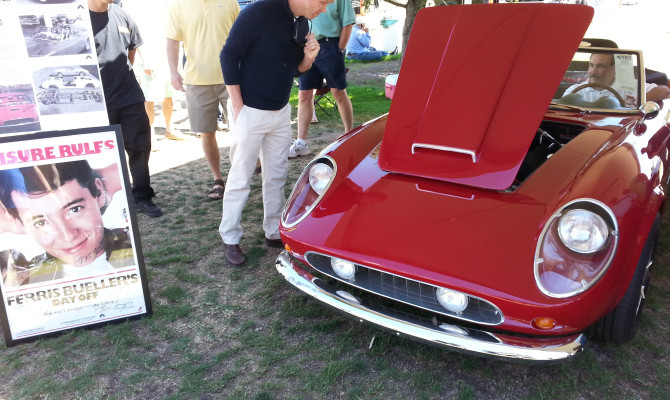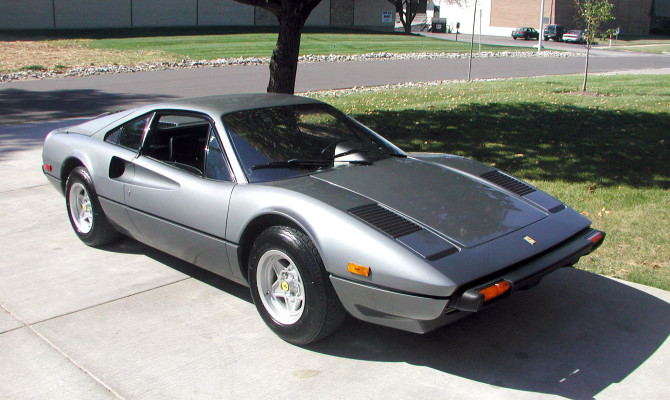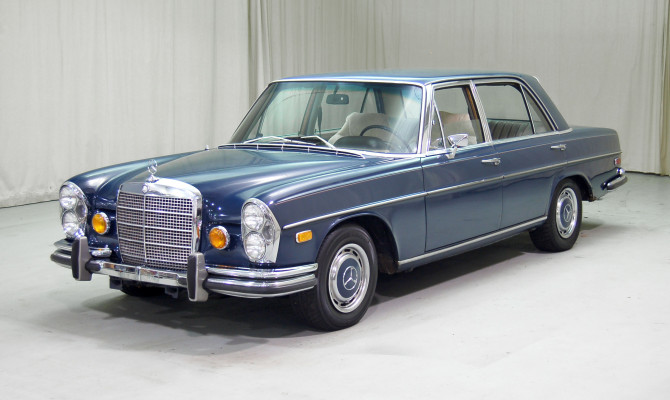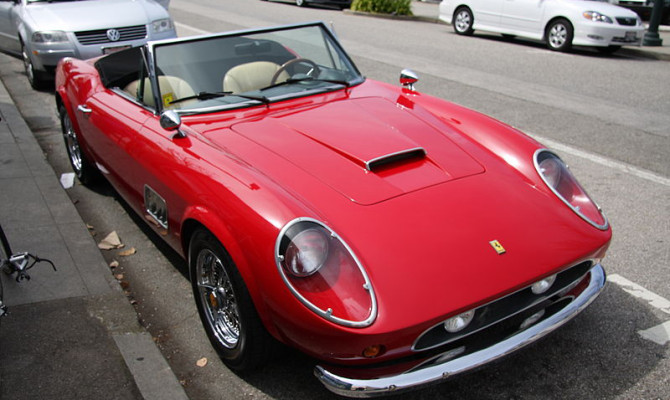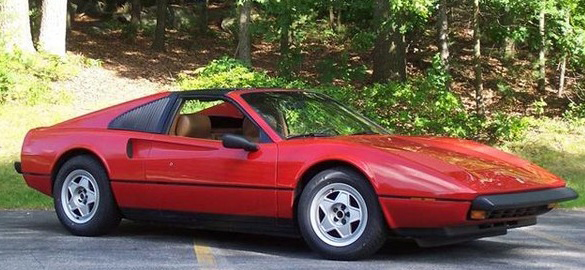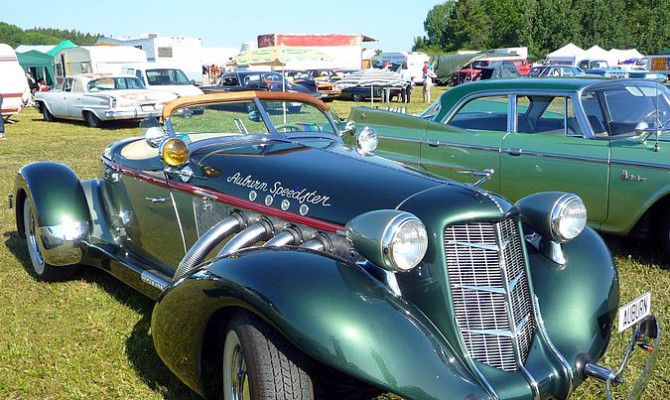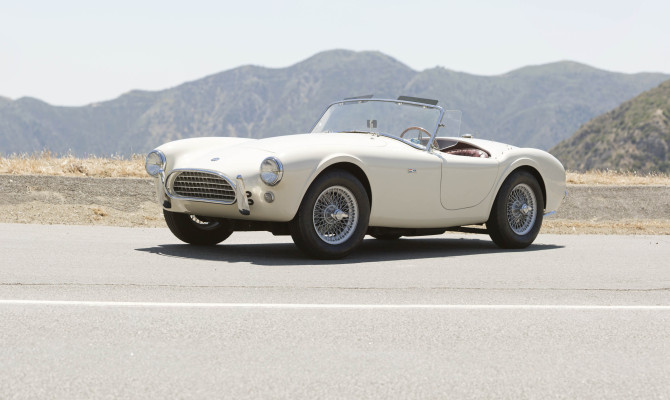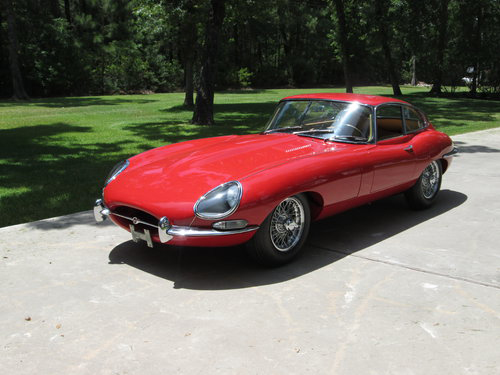Western Canada’s best attended consumer show brings together engaged and excited visitors over a six-day period where they can see hundreds of different car brands under one roof, manufacturers and dealers see the Vancouver International Auto Show as a major boost to the industry they cannot afford to ignore.
“Vancouver International Auto Show attendees will have the chance to win Grand Prize vehicles, including an all-new 2017 Nissan Pathfinder Platinum Midnight Edition and an all-new 2017 Chevrolet Bolt EV. “
by Grant Stoecker
“These five cars never made it to these shores while in production but they can be imported now under recent relaxation of import regulations…”
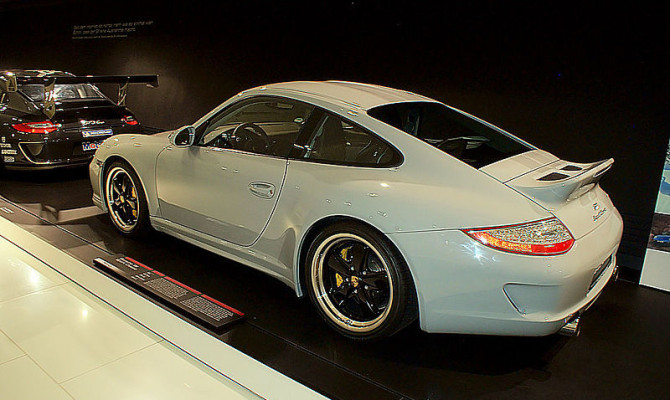
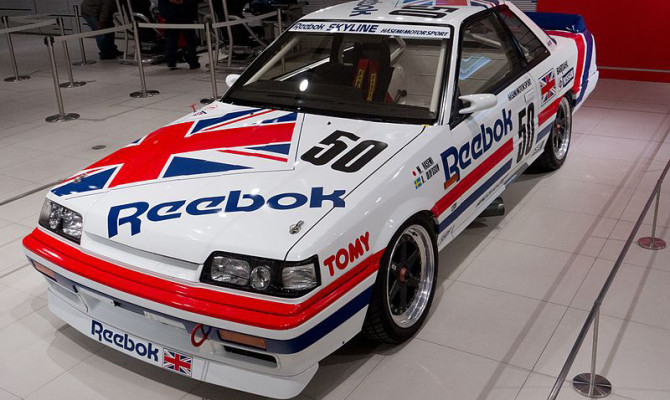
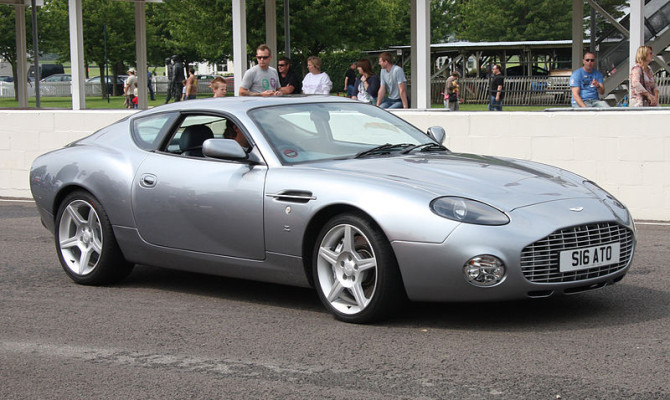
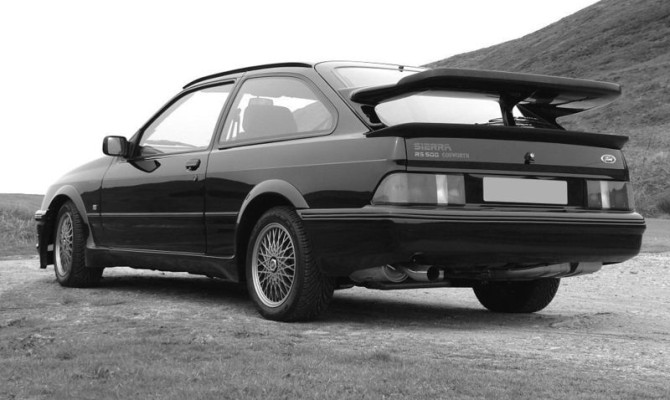
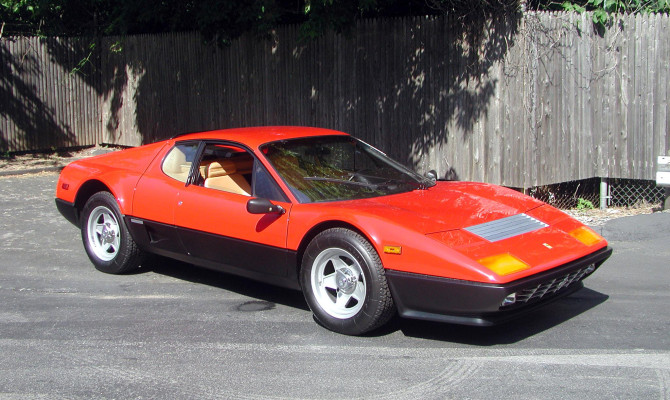
Bringing in this selection of cars from overseas can be a major hassle but as future collectibles, they just might be worth the paperwork.
These five cars never made it to these shores while in production but they can be imported now under recent relaxation of import regulations.
1986-87 Ford Sierra RS Cosworth
Ford lacked the ability to create a truly credible performance car in the U.S. for the duration of the 1980s, yet it seemed to produce a slew of turbocharged, high-performance offspring from its European operations. The crown jewel of the formerly forbidden fruit is the Sierra RS Cosworth. Built to fulfill homologation for Group A rallying, the RS packed a mean punch, banging out 224 horsepower from a Cosworth turbocharged 4-cylinder. The first generation three-door model only saw the production of 5,542 cars. At more than 25 years old, the RS is a prime target for importation.
1973-84 Ferrari Berlinetta Boxer (365 GT4 BB, BB 512)
The Ferrari Testarossa was a favourite here in the late 1980s, but its predecessors, the 365 GT4 BB and BB 512, remained forbidden fruit. Providing the silhouette for the future Testarossa, the Berlinetta Boxers provide connoisseurs of the prancing horse a unique alternative to the car that adorned the walls of every child from 1984 to 1996. With a production run of under 4,000 cars, the Berlinetta Boxer is a guaranteed classic from the hills of Maranello.
1989 Nissan Skyline GT-R
The R32 Nissan GT-R saw the revival of the legendary GT-R, a nameplate that had not been used by Nissan in nearly two decades. Attaining its cult classic status as “Godzilla” was not hard for the GT-R, as the car’s twin turbo 6-cylinder was good for a stock 330 horsepower and tuning houses can easily bring that up to 600 — impressive even by today’s standards. With power going to all four wheels, the GT-R was one of the first super cars to utilize all-wheel drive. Thanks in large part to its starring role in a slew of street-racing movies in the 1990s and 2000s, the GT-R will likely maintain its cult status for years to come.
2010 Porsche 911 Sport Classic
The 997 generation of the Porsche 911 had a smattering of limited edition variants — the Turbo S, the GT3 RS 4.0, the Speedster and the GT2 RS — but none of them is nearly as rare as the Sport Classic. Created to be a limited run of only 250 cars, the Sport Classic is a throwback to the 1970s 911 Carrera RS. The Sport Classic features some of the most beloved options of the original 911s, including a ducktail spoiler, black Fuchs rims, a double-bubble roof and painted racing stripes.
2002-03 Aston Martin DB7 Zagato
Aston Martin revived its DB series in 1994 with the DB7. They perfected it in 2002 with the introduction of the Zagato model at the Paris Auto Show, where it immediately sold out. A fitting homage to the 1960s DB4GT Zagato, the DB7 Zagato rode on a shortened chassis, and was powered by Aston Martin’s new 5.9-liter V-12. The bodywork was a classic Zagato design, and features a double-bubble roof, raised hood and enlarged front grille, an interpretation emulating the beauty of the original masterpiece. Just 99 Zagatos were originally produced, and were only allocated for sale in Europe, Asia, and Britain. The Zagato body DB7 is bound to be a future collectible.
Grant Stoecker writes for Hagerty Insurance. Hagerty is the world’s leading specialist provider of classic car and boat insurance. Learn more at hagerty.ca.
Matt Lewis writes for Hagerty Insurance. Hagerty is the world’s leading specialist provider of classic car and boat insurance. Learn more at hagerty.ca.
Bad things often happen to good cars in the movies.
Here are five that make car lovers squirm.
1961 Ferrari 250 GT California Spyder (Ferris Bueller’s Day Off)
This scene is perhaps the most famous bit of classic car mayhem in all of moviedom. In it, the Ferrari is seen placed on jack stands running in reverse in a hilariously stupid attempt to remove the miles that had been put on the car during the day’s class-cutting good fun in Chicago. In a fit of frustration directed at his misplaced-priorities jerk of a father, Cameron Frye (Alan Ruck) accidentally kicks the car off the jack stands and it sails out of its glass enclosure into the woods below. Happily, as you’ll read with the Miura and the Aston below, it wasn’t a real California Spyder.
1970 Dodge Challenger (Vanishing Point)
The ’70 Dodge Challenger (one of about five used for the film) meets a fiery end when the protagonist of the film (played by Barry Newman) drives it into a bulldozer being used as a police road block.
1967 Lamborghini Miura P400 (The Italian Job)
The Miura is probably the most beautiful mid-engine sports cars of all time. And that’s what makes this scene so hard to watch. In the opening scene of the movie, mobsters destroy heist-plotter Roger Beckerman’s (Rossano Brazzi) Miura with a backhoe and push it over a cliff. A small consolation is the fact that an actual intact Miura wasn’t destroyed. Just body panels over an empty accident-bent chassis. Interestingly, when the producers went to clean up the mess the next day, the remains had disappeared. Neither the chassis tag nor any of the pieces have surfaced to this day.
1979 Porsche 930 (Caddyshack)
This scene is an object lesson as to why you should never park your car with the sunroof open within a half-mile radius of where alcohol is being served: Young Spalding Smails, suffering from a case of ‘affluenza’ combined with Johnny Walker, staggers up to Dr. Beeper’s parked 930 and empties the contents of his upper GI tract into the open sunroof. The squishy sound-effect of Beeper sliding into the seat never fails to make one cringe.
1979 Porsche 928 (Risky Business)
This scene reminds us all why we should use the hand brake. Those of us who are old enough to have seen this in theatres didn’t see this one coming: Tom Cruise is enjoying a night out with the typical Pretty Woman-like, non-drug addicted hooker (played by Rebecca de Mornay) of which Hollywood is so fond. Her handbag strap pulls the gear shifter into neutral as she’s exiting the car. It rolls down a hill heading toward Lake Michigan with Cruise on the hood in a futile attempt to arrest the forward motion of the 3,800-pound 928. It ultimately comes to a stop at the edge of a wooden pier. Just as Cruise breathes a sigh of relief and starts to make his way to the driver’s door, the entire pier collapses, taking Cruise and the car for a swim in the lake. Audiences everywhere gasped audibly. The scene at the dealership where the service manager enters the waiting rooms and asks, “Which one of you is the U-Boat commander?” is priceless.
**********
Rob Sass is the vice-president of content for Hagerty Insurance. Hagerty is the world’s leading specialist provider of classic car and boat insurance. Learn more at hagerty.ca and you can email rsass [at] hagerty [dot] com
The miracle of depreciation has put a tempting array of classic exotics within reach for many of us.
Be warned, though, that very often, the cheque you write for the purchase is just the first of many that you’ll write if you make a poor or unlucky choice. Keep in mind this maxim: The cheapest examples almost always wind up being the most expensive in the long run. Here are four that famously can be punishing on the wallet:
1966-80 Rolls-Royce Silver Shadow
At around the cost of a loaded Ford Focus for a nice one, it’s hard not to be tempted by the upper crust looks of a vintage Rolls-Royce. But go in with your eyes open: A simple brake service can exceed $1,000, with the special Rolls-Royce brake fluid going for $125 all by itself. Try to substitute something from your local auto parts store and you could be looking at $3,000 or more to repair the damage. That famous Parthenon-like grille in front is about $2,500 used if you can find one. The hood ornament alone can cost more than $1,500 should anyone decide to make a souvenir out of yours. Ouch.
1975-85 Ferrari 308 GTB/GTS
At around $30,000, this lovely thing represents one of the lowest points of entry to the storied Ferrari brand. Fortunately, Tom Selleck in the part of Thomas Magnum probably never had to foot the shop bill to maintain his employer’s 308. If he did, he’d likely have had to pawn the Hawaiian shirt and moustache. While Ferrari 308s have gained a reputation for being reasonably reliable cars as Italian exotics go, they are maintenance-intensive and things do break, particularly with the oldest now approaching 40 years old. That lovely combination switch that operates the turn signals and pop-up headlights? They can cost close to a grand (and they do fail from time-to-time). A belt service including the all-important timing belt needs to happen at least every five years or 30,000 miles. Ignore it and you could be on the line for a $15,000-plus engine rebuild.
1968-72 Mercedes-Benz 300SEL 6.3
The 6.3 is the closest that Mercedes ever came to building a Detroit-style muscle car back in the day (albeit a four-door one). Sporting a huge 384 cubic-inch V-8 with fuel injection and over 300 hp, the 6.3 was capable of a sub-six second 0-60 run and a 14.2-second ¼-mile time. All of this came at a huge price, though, both in acquisition costs and maintenance.
A complete rebuild of the air suspension system can cost more than $5,000, as can the wonderfully complex pre-computer, mechanical fuel-injection system. At least the parts are available.
1961-74 Jaguar E-Type
The E-Type is actually nowhere near as chronically troublesome as its reputation would suggest. This gorgeous car still seems to take a punch on a regular basis (most recently in a plot arc of AMC’s “Mad Men,” where a suicide attempt was botched because the car wouldn’t start). It is, however, a fairly complex car that takes kindly neither to abuse nor fools with tools. Burn out the clutch in your E-Type and you may wish you hadn’t been born. The list of things that have to come off of or out of the car to do the job is long. The entire massive clam shell hood, headlight and front fender assembly known by the British term “bonnet” is just the tip of the iceberg. It has to come off simply to get at the engine and transmission, which also need to part company with the rest of the car — along with three grand or so of your kid’s college fund.
**********
Rob Sass is the vice-president of content for Hagerty Insurance. Hagerty is the world’s leading specialist provider of classic car and boat insurance. Learn more at hagerty.ca and you can email rsass [at] hagerty [dot] com
Replicas are all good fun unless someone tries to pass one off as the real deal…
The classic car world is full of “coulda, shoulda, woulda” stories of people who had the opportunity to buy something when it was affordable only to see it sail out of reach.
If you didn’t buy a Shelby Cobra during the Nixon administration for 10 Grand, the only alternative for most people today is a replica. Replicas are all good fun unless someone tries to pass one off as the real deal. Here are five of the most common classic car counterfeits:
The Cobra might just be the most desirable sports car on the planet. Not coincidentally, it’s also the most replicated. With bulging, macho good looks; a big block Ford V-8; side pipes; shattering performance; and only around 300 originals made, it was a certainty from almost the beginning that supply and demand would never be equal. The originals have always commanded good money — by the late 1970s, they were approaching $50,000, and around that time, cottage industries sprang up everywhere to build Cobra replicas. Some were quite good while others bordered on undriveable. A lot depended on the skill (or lack thereof) of the builder.
Even Carroll Shelby, the car’s original creator, got into the act. Some argue that the 1992 Dodge Viper was the ultimate tribute to the Cobra. Fortunately, it’s really hard to pass off one of the replicas as the real deal; the Shelby Club maintains a registry of the real cars by serial number and history
*We believe that every classic car has a story. Tell us yours here.*
2. 1955 Porsche 550 Spyder
The 550 Spyder (of James Dean death car fame) and the more common bathtub-like Porsche 356 Speedster have a long history of being replicated. Vancouver company Intermeccanica makes very high quality Speedster replicas, while Beck in the U.S. has a great reputation for making 550 Spyder replicas. Because the originals were alloy and steel, respectively, and the replicas are fibreglass, there’s no danger of one being passed off as the real thing. Real 550 Spyders are $4 million or so and Speedsters can bring more than $300,000. Replicas can be had for around $30,000, which combined with the fact that they’re quite fun to drive explains their appeal.
3. 1961 250 GT Ferrari California Spyder
Before Ferrari got serious about cracking down on violations of its intellectual property rights, its products were among the most commonly knocked-off cars on the planet. A very bogus California Spyder built by a company called Modena Industries shot to fame as the hero car in “Ferris Bueller’s Day Off.”
About 50 were built between 1987 and 1989, before Ferrari said “basta!” Real ones start at about $9 million.
After the “Ferris Bueller” car, the Ferrari with the most screen exposure was the red Ferrari 308 GTS that Tom Selleck drove on “Magnum P.I.” Conveniently, as the 308 reached the apex of its fame via the TV show, Pontiac came out with the mid-engine Fiero, whose space frame design combined with non-stressed removable plastic body panels made it the ideal platform for conversions designed to simulate far more expensive mid-engine exotics. The most famous (or perhaps infamous) of these was the MERA, a replica of the Ferrari 308. While the proportions were off and the interior screamed cheap, we suspect that most of the then 20-something barflies taken in by the guy with gold chains and a polyester Hawaiian shirt driving the bogus 308 never suspected a thing.
5. 1935 Auburn 851 Speedster
Other than a slew of neoclassics that vaguely replicate Mercedes-Benzes of the 1930s, pre-war cars are seldom faked. But the Iconic Indiana-built Auburn Speedster (along with its equally stunning sister the Cord 810/812) is an exception. Lost count of how many companies have built replicas over the last 40 years are so. Like the Cobras, some are quite good and some exhibit the build quality of a Sochi hotel room. A replica Speedster featured in the opening scene of “Indiana Jones and the Temple of Doom.”
Rob Sass is the vice-president of content for Hagerty Insurance. Hagerty is the world’s leading specialist provider of classic car and boat insurance. Learn more at hagerty.ca and you can email rsass [at] hagerty [dot] com
The Pebble Beach auctions are generally not the place for bargain hunters.
It’s nothing unusual for $300 million in automotive merchandise to change hands with some lots bringing more than $10 million and a staggering 100-plus cars capable of cracking the $1 million mark.
Just 20 or 30 years ago, many of these cars were attainable to people of ordinary means. So what’s an ordinary mortal whose been priced out of the Ferrari and Cobra market to do? Look at some alternatives that provide 90 percent of the bang for 5 percent of the buck. Here are some of our favorites:
1963 Shelby Cobra/1992 Dodge Viper
Everybody loves a Cobra. Carroll Shelby’s idea of stuffing an American V-8 in a lightweight British sports car was an instant hit. The trouble is, if you didn’t buy one in the early 1980s when they were about $30,000, your chances of acquiring one are pretty slim for much less than a million. So, instead of a Cobra replica you’ll always have to make excuses for, why not buy its spiritual successor, the Dodge Viper? Early examples of this V-10 powered, raw and uncompromising, car can still be had for less than what Cobras were selling for 30 years ago.
1967 Ferrari 275 GTS/4 N.A.R.T. Spider/Intermeccanica Italia
One example recently sold for around $17 million. But unknown to most people, it has an American-powered near doppelganger that costs a fraction of the price.
Back in the 1960s, Canadian Frank Reisner dreamed of building Ferrari-like GT cars with American V-8 power. His Intermeccanica Italia roadster hit the mark in terms of Ferrari-like style — the bodies were even built in Italy — but in place of a complex and expensive V-12, most had small-block Ford V-8 power, with some tuned by the famous American race shop Holman and Moody.
About 400 Italias were built, and they’re not cheap (RM Auctions sold one in 2007 for $44,000). They cost a fraction of the Ferrari but have most of the looks and performance, if not the pedigree.
1965 Jaguar XKE coupe/1973 Triumph GT6
The Jaguar XKE is generally accepted as one of the prettiest cars of all time. And its great looks don’t come cheap. The first and most desirable series of the beloved XKE or E-Type now regularly brings more than $100,000. But few people know that fellow British sports car company Triumph made a three-quarter scale near replica of the E-Type, the Triumph GT6 that was also powered by a smooth and throaty straight six (albeit one that was half the size). About 10 grand buys a Triumph GT6 that many will mistake for a Jag.
Rob Sass is the vice-president of content for Hagerty Insurance. Hagerty is the world’s leading specialist provider of classic car and boat insurance. Learn more at hagerty.ca and you can email rsass [at] hagerty [dot] com
As venomous snakes go, Cobras are wicked cool… (more…)
I have no desire to wade into the minefield that is the eternal “chick car vs. dude car” argument.
But it’s self-evident that the cars on this list most definitely have a “Y” chromosome. In fact, they positively ooze testosterone:
1. 1966-67 Shelby Cobra 427
Many people aren’t aware of the fact that the fire-breathing Cobra actually started out as a rather delicate British sports car, the AC Ace. Carroll Shelby saw the potential, installed a 260-cubic-inch Ford V-8, and it was good. But a 427-cubic-inch NASCAR engine was even better along with side-pipes and fat fenders. Performance was blistering and so was the noise.
2. 1970-71 Plymouth Hemi ‘Cuda
The new (back then) Mopar E-body forever broke the association with the old economy Valiant, and the Barracuda and its stablemate, the Dodge Challenger, were low, wide and particularly menacing.
The 426 Hemi V-8 made it one of the baddest of all time.
3. 1968 Corvette L88
This is the Corvette that ordinary civilians weren’t supposed to be able to buy. It was designed for the track at a time when GM was observing an official racing ban. L88s had no creature comforts (not even a heater) and overheated in the briefest of traffic jams. To further discourage non-racers, GM underrated the horsepower of the 427-cubic-inch engine, reporting it at around 400 hp. In reality, it was well over 500 hp.
4. 1969-73 Ferrari 365 GTB/4 “Daytona”
The Ferrari Daytona was one of the last V-12 front-engine Ferrari GTs that Enzo Ferrari personally had a hand in.
For almost every year it was in production, it was the fastest road car available in the U.S. with a top speed of more than 172 mph. Racer Dan Gurney and journalist Brock Yates won the infamous cross-country Cannonball Run in a Daytona going coast-to-coast in just under 36 hours.
All of the controls from the ultra-heavy clutch to the unassisted steering are like a workout machine set on maximum resistance.
5. 1976-89 Porsche 930
The 930 was like a 911 on steroids. Literally.
Choose your favorite juiced ballplayer from the ‘roids era and compare his forearms to the 930’s aggressively flared fenders and you’ll get it. Performance was otherworldly for the time with 0-60 times of under four seconds and sub-14-second quarter-mile times, bettering all but the most muscular of Detroit muscle cars (albeit at a very steep price).
The 930 could also bite back hard. Its rear-engine and “on or off” turbocharger made it easy to spin.
The Ferris Bueller Ferrari is probably the best-known big screen fake…
**********
Hollywood loves to incorporate hot classic cars into movies and television shows. Producers and insurers are also notoriously risk-averse, preferring to use replicas rather than the hyper-valuable real deal whenever possible.
Here are some of our favourite big- and small-screen fakes:

Hemi Cuda Barrett: This is a real example of a 1971 Hemi ‘Cuda convertible (Photo Courtesy of Barrett-Jackson)
Nash Bridges – 1971 Plymouth Hemi ‘Cuda
The San Francisco cop show revived Don Johnson’s career, pairing him with Cheech Marin (half of the stoner comedy team of Cheech and Chong).
The yellow car that appeared to be an ultra-rare Hemi ‘Cuda convertible was actually what is known as a “clone” or a car that started out as a lesser model but was restored to appear as a top shelf ‘Cuda.
The difference in price is staggering — around $50 grand for the fake, more than $1 million for the real deal.
Ferris Bueller’s Day Off – 1960 Ferrari 250 GT California Spyder
The Ferris Bueller Ferrari is probably the best-known big screen fake.
From a distance, it appears reasonably accurate, but Ferrari aficionados can spot the differences in their sleep, from the Triumph-sourced gauges to the MGB taillights. And don’t get them talking about the bogus Italian Borrani wire wheels.
A real California Spyder is a $12 million car today.
Miami Vice – 1972 Ferrari 365 GTS/4 Daytona
Don Johnson appears to be a bit of a magnet for fake cars.
His black Daytona Spyder was actually a fake built on a Corvette chassis, and few Ferrari fans shed tears when the car was blown up in sight of Johnson’s character, Sonny Crockett, and his pet alligator, Elvis.
Afterward, Crockett took to driving a white Ferrari Testarossa – a real one this time.
Top Gun – 1958 Porsche Speedster
Kelly McGillis’s character drove this one around San Diego in the classic ’80s movie.
Porsche Speedsters are among the most replicated cars ever — most are convincing fiberglass bodies slapped on top of a VW Beetle platform. The replica featured in Top Gun appears to have been one of the good ones, built by longtime Speedster replica-maker Intermeccanica.
They’re still in business in British Columbia, turning out extremely high-quality vintage Porsche replicas.
Indiana Jones and the Temple of Doom – 1935 Auburn 851 Boattail Speedster
Indy’s sidekick Short Round still holds the record for the best automotive chase involving a pre-teen driver.
With blocks tied to the pedals, Short Round takes Jones and a lounge singer on a wild ride through pre-war Shanghai.
The car was, of course, a complete fake, and not a particularly convincing one at that.
Rob Sass is the vice-president of content for Hagerty Insurance. Hagerty is the world’s leading specialist provider of classic car and boat insurance. Learn more at Hagerty.ca.
Recent Comments
- { Enjoyed your Forest of Bowland in the BMW X5M, particularly the photo of the BMW in front of the main part of Stonyhurst College where... }
- { Bantam designed the Jeep, not Willy's or Ford. The American military gave the original Bantam prototype to Willys and Ford to copy. There is plenty... }
- { All Escalades come with a 6.2-lilter V8 engine that produces 420 horsepower. A six-speed automatic is the only transmission offered and drives the rear wheels.... }
- { Alexandra is an excellent journalist. }
Popular Posts
- Journey to a ‘Sparkling’ Luxury Okanagan Resort “Four lucky readers will put a Dodge Journey’s weekend-...
- The Need For Speed: Hike Those Highway Limits More than half of those polled believe the province sho...
- Drives-U-Crazy… Erratic drivers. An early morning drive from Kelowna to Vancouver is nor...
- Readers Respond: The Pros and Cons of Increasing B.C. Speed Limits Increasing the speed limits will only increase risk to...
- Honda CR-V Review: The Compact Crossover To Get Things Done The CRV is a very stylish and aerodynamic crossover veh...


